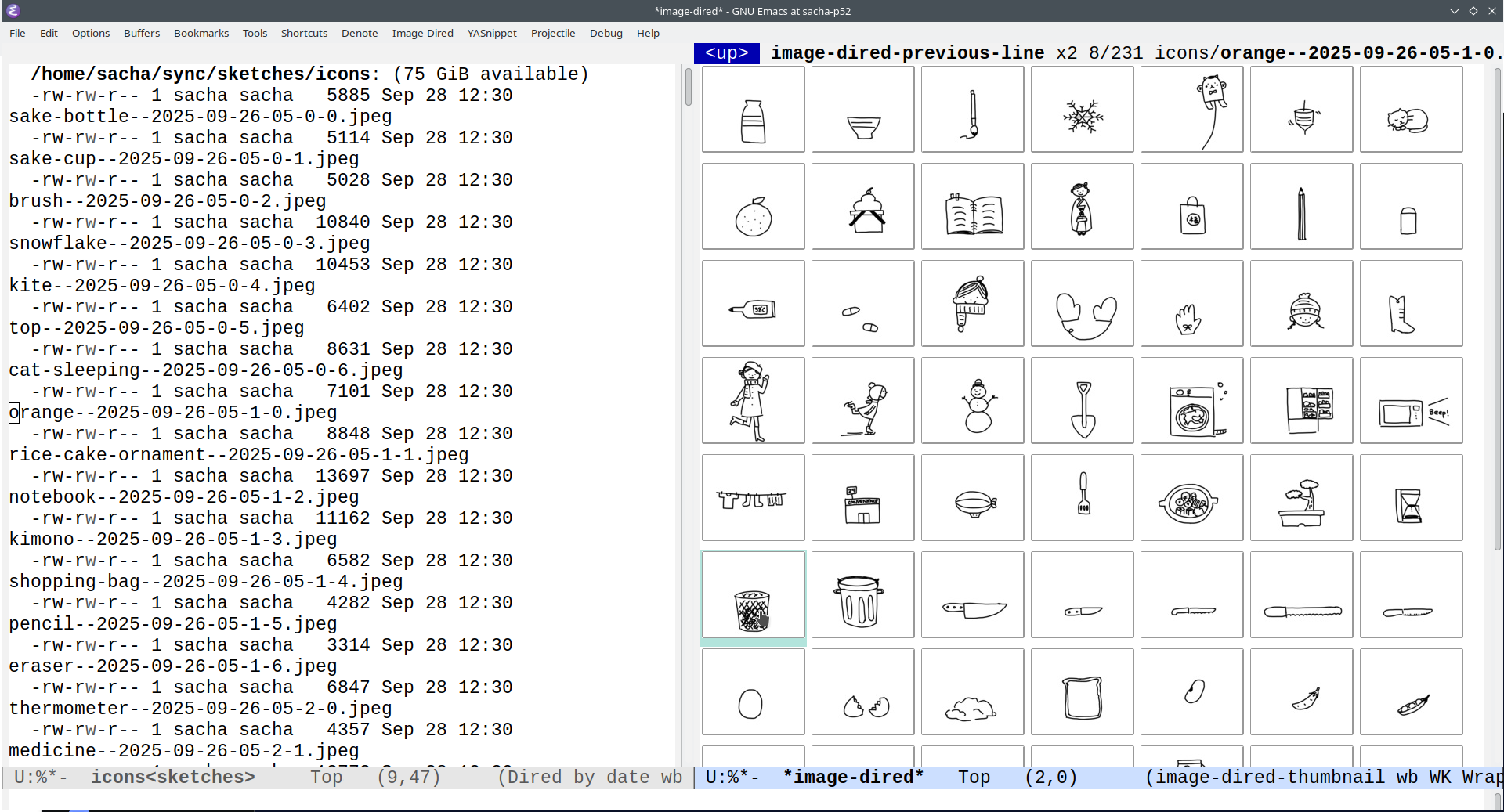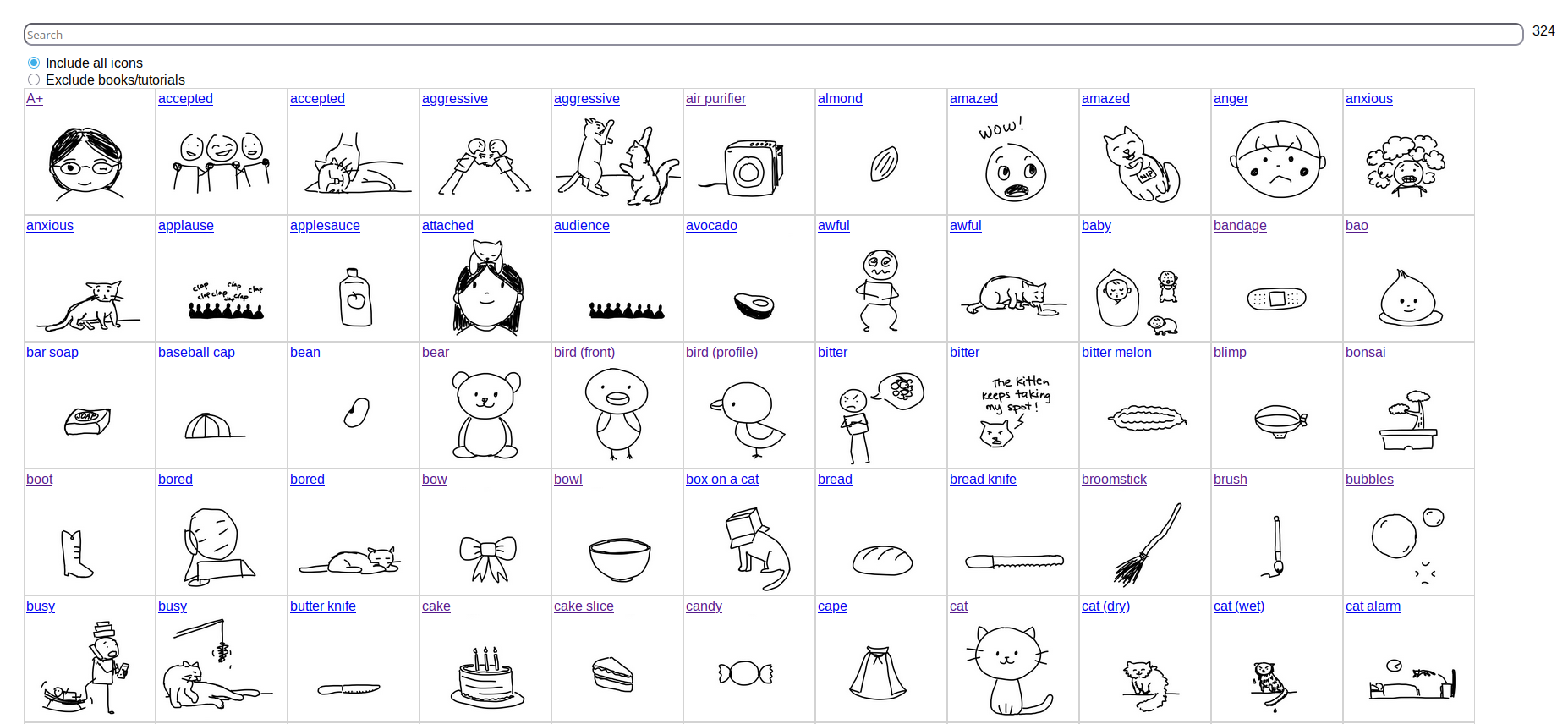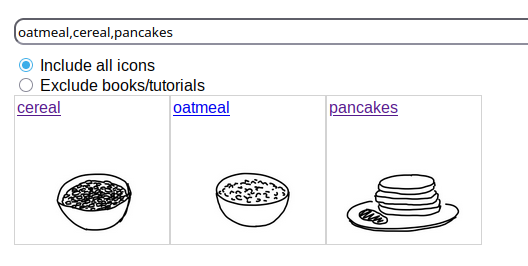2025-10-06 Emacs news
| emacs, emacs-newsWhy I Keep Blogging With Emacs is a short blog post that got a lot of comments on HN this week. Also, xenodium is trying out making videos, starting with batch-applying command-line utilities.
- Upcoming events (iCal file, Org):
- Emacs Paris: S: Emacs workshop in Paris (online) https://emacs-doctor.com/ Tue Oct 7 0830 America/Vancouver - 1030 America/Chicago - 1130 America/Toronto - 1530 Etc/GMT - 1730 Europe/Berlin - 2100 Asia/Kolkata - 2330 Asia/Singapore
- Emacs.si (in person): Emacs.si meetup #10 2025 (v #živo) https://dogodki.kompot.si/events/b2ff9efd-eee0-414a-a933-90c4abc20dbe Tue Oct 7 1900 CET
- OrgMeetup (virtual) https://orgmode.org/worg/orgmeetup.html Wed Oct 8 0900 America/Vancouver - 1100 America/Chicago - 1200 America/Toronto - 1600 Etc/GMT - 1800 Europe/Berlin - 2130 Asia/Kolkata – Thu Oct 9 0000 Asia/Singapore
- Atelier Emacs Montpellier (in person) https://lebib.org/date/atelier-emacs Fri Oct 10 1800 Europe/Paris
- M-x Research: TBA https://m-x-research.github.io/ Wed Oct 15 0800 America/Vancouver - 1000 America/Chicago - 1100 America/Toronto - 1500 Etc/GMT - 1700 Europe/Berlin - 2030 Asia/Kolkata - 2300 Asia/Singapore
- Emacs configuration:
- Super simple Emacs config (05:51)
- Emacs Lisp:
- Appearance:
- Navigation:
- Dired:
- Writing:
- Org Mode:
- Why I Keep Blogging With Emacs (HN, Irreal)
- Sacha Chua: Org Mode: calculating table sums using tag hierarchies
- (update) org-supertag: support org-link convert to embed-block, fixed table view filter
- How to Manage AWS IAM Roles with Emacs Org Mode | Full Tutorial (05:23)
- Irreal: Org-transclusion
- Jack Baty: CalDAV to my Emacs Diary - getting Fastmail calendar to show up in Org Agenda
- [BLOG] #21 [[bbb:OrgMeetup]] on Wed, August 13, 19:00 UTC+3
- org-social v2: new interface, avatars, thread nav, relays (@andros@activity.andros.dev, Reddit)
- Orgdeep: Write plain Org Mode file and serve them as HTML without any explicit export step (Reddit)
- Org development:
- Denote:
- Lambda Land: How I Organize the Papers I Read (Irreal) denote-citar
- Completion:
- Coding:
- Math:
- Disabling MathJax in Brightspace - Sociology, statistics and software (@bthalpin@mastodon.social) - includes Org snippet
- Web:
- Multimedia:
- AI:
- Building workflows with gptel
- Emacs RAG with LibSQL - Enabling semantic search of org-mode headings with Claude Code (18:57)
- Emacs. Your Customizable AI Control Center with the llm Package (02:09)
- Laurent Charignon: Building Software Faster with LLMs: Part 3 - Higher-Level Abstractions (org-roam via MCP)
- Part 4 - The Way We Build Software Is Rapidly Evolving - code-review-logger
- Community:
- Other:
- My Morning Routine in Emacs | Andros Fenollosa (@andros@activity.andros.dev)
- Alvaro Ramirez: Bending Emacs - Episode 1: Applying CLI utils (YouTube 06:16, Reddit, Irreal)
- RDF-editor: viewing, understanding and editing linked data in emacs (a work in progress)
- GTD List Manager and Emacs (55:55) - low resolution video, though.
- J.e.r.e.m.y B.r.y.a.n.t: Emacs Garbage collection improvements by using the GCMH package
- File management with fsel, draft integration with dired
- Announcing twen-twen-tw.el: A package to reduce eye strain (Reddit)
- Protesilaos Stavrou: Emacs: tmr version 1.2.0
- Emacs users who bank with the UK Starling Bank - feat(starling.el): Added insight table by abdrysdaleGitHub (@draxil@social.linux.pizza)
- Irreal: Eliminating Emacs “Bloat”
- Getting meta-based Emacs shortcuts to work in Kitty terminals
- Emacs development:
- Run buffer-local window change functions in their buffers now
- Add fallback backend in auth-sources
- VC: New commands for cherry-picking (bug#79408)
- Improve log-view-copy-revision-as-kill
- New command log-view-copy-revision-as-kill
- New command log-view-unmark-all-entries
- New command vc-kill-other-working-tree-buffers
- VC: Allow deleting or moving current working tree
- New value 'window' of 'global-hl-line-sticky-flag'
- New packages:
- bmp: Version bumper for git projects (MELPA)
- cacao-theme: Based on a image reversal (MELPA)
- elkee: Keepass client (MELPA)
- hare-mode: Hare mode (MELPA)
- ob-ts-node: Org-Babel support for TypeScript via ts-node (MELPA)
- ziggy-mode: Major mode for Ziggy, a data serialization language (MELPA)
Links from reddit.com/r/emacs, r/orgmode, r/spacemacs, Mastodon #emacs, Bluesky #emacs, Hacker News, lobste.rs, programming.dev, lemmy.world, lemmy.ml, planet.emacslife.com, YouTube, the Emacs NEWS file, Emacs Calendar, and emacs-devel. Thanks to Andrés Ramírez for emacs-devel links. Do you have an Emacs-related link or announcement? Please e-mail me at sacha@sachachua.com. Thank you!







%20--%20drawing%20icons.jpeg)
%20--%20drawing%20icons.jpeg)




